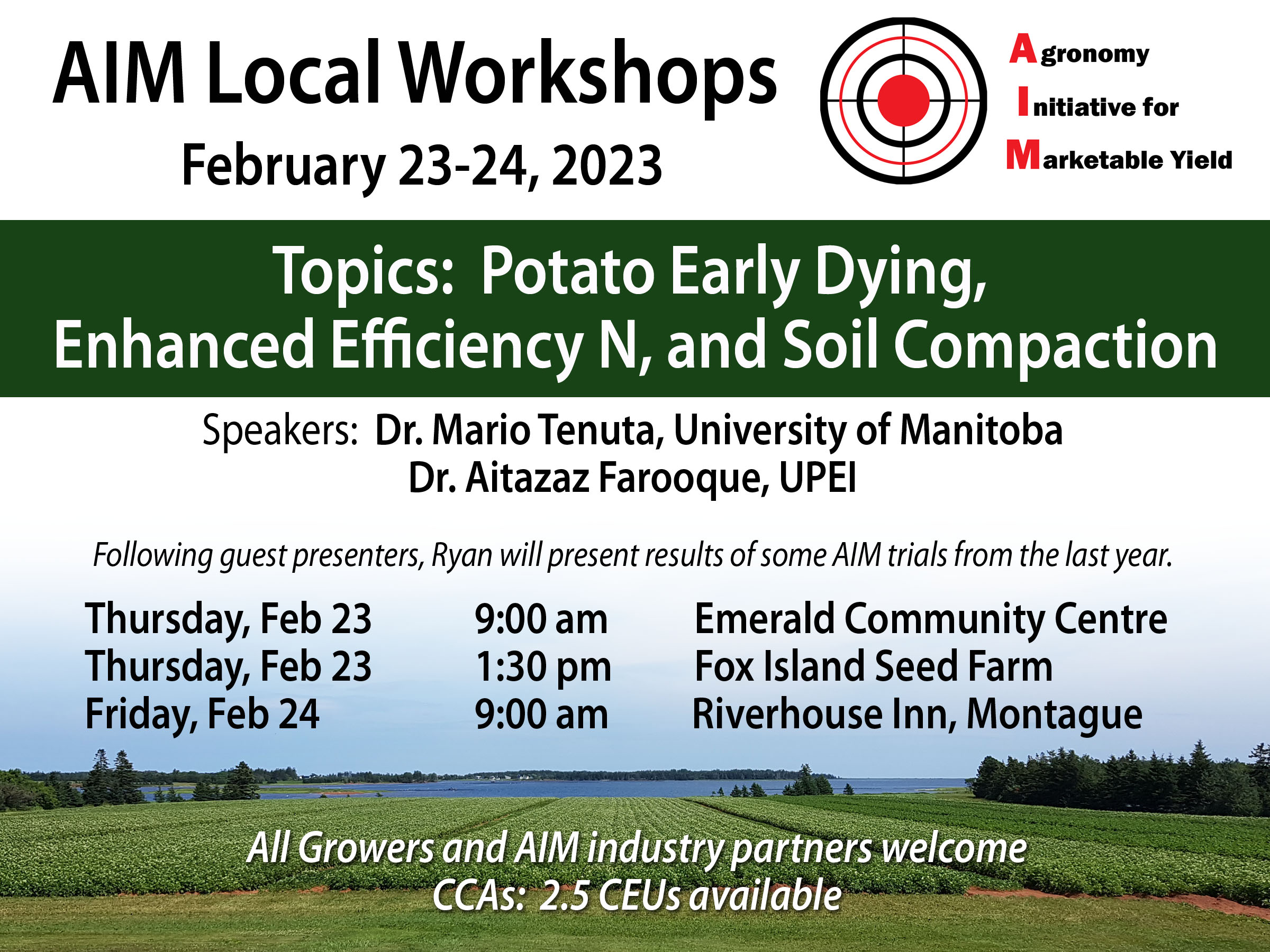
22 Feb Agronomy Update – February 22
I hope everyone is having a great week. Canada Games are underway, some folks are headed away, while others are taking in the games or some of the concerts on offer.
AIM Local Workshops This Week:
A quick reminder that Dr. Mario Tenuta is here for a return visit to the Island this week. Mario will be sharing results from the Canadian Potato Early Dying Network (CanPEDNet) project that is wrapping up, as well as talking about nitrogen use in potato rotations: why do we need nitrogen, how do we make sure we’re using the right amount, and how do we use nitrogen in more efficient ways.
I’ve also invited Dr. Aitazaz Farooque from UPEI to share some of the work that he and his team have been doing for AIM in the last couple of years on soil compaction, including use of soil EC sensors to detect compaction. I will then also briefly share results of a few AIM projects on soil health from last year. All potato growers and AIM partners are welcome to attend!
Dates and Times:
Thursday, Feb 23rd: 9 am at Emerald Community Centre
Thursday, Feb 23rd: 1:30 pm at Fox Island Seed Farm (upstairs meeting room)
Friday, Feb 24th: 9 am at Riverhouse Inn, Montague
Managing PVY
There has been lots of discussion this winter about higher than normal PVY readings from last year, not just here in PEI but in most of Eastern Canada and the NE USA. Last week, Mathuresh Singh from the ACS Lab in NB was at the Potato Conference to share some insights from their research and surveys to help try and explain why PVY rates were so high last year. Some key points:
- Green Peach Aphid (GPA) detections were much higher than in recent years in both NB and PEI, prior to the majority of seed was killed. GPA can transmit PVY many times more effectively than other aphids.
- GPA also seem to show resistance to some of the most commonly used insecticides, like Silencer/Matador.
- From NB survey data, growers that used more than 2 L of mineral oil per acre per week had 3 times less PVY than growers that used less than that rate.
- NB growers that used multiple types of aphicides had half of the PVY rate as those that used one type of aphicide (1 mode of action)
You can review Mathuresh’s slides on the Agronomy Site if you weren’t able to attend last week. As well, Mathuresh and I prepared a factsheet on PVY management a couple years ago that is still very relevant: PVY Management Factsheet (PDF)
Have a great rest of the week, and I hope to see lots of you at the workshops tomorrow and Friday.
Ryan
